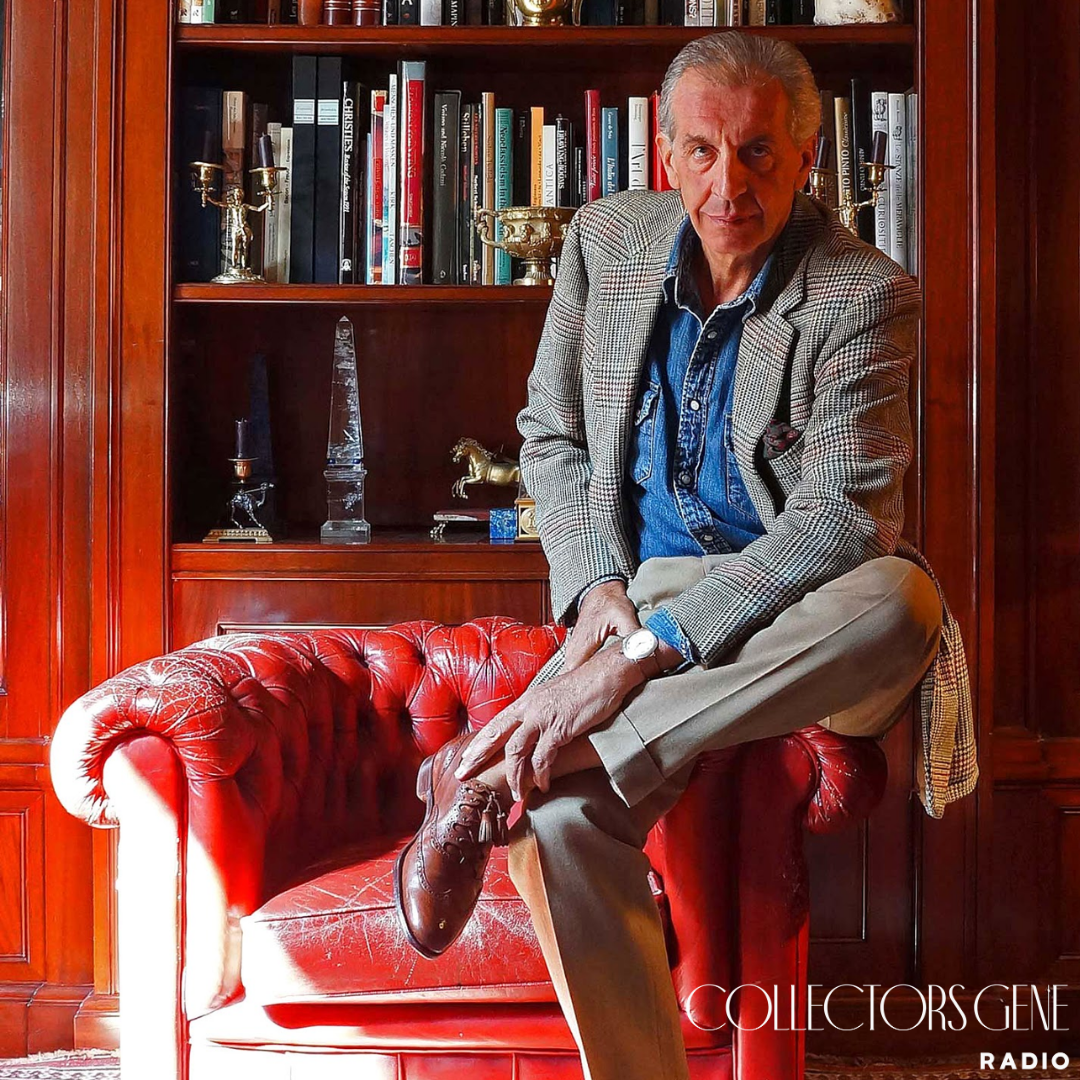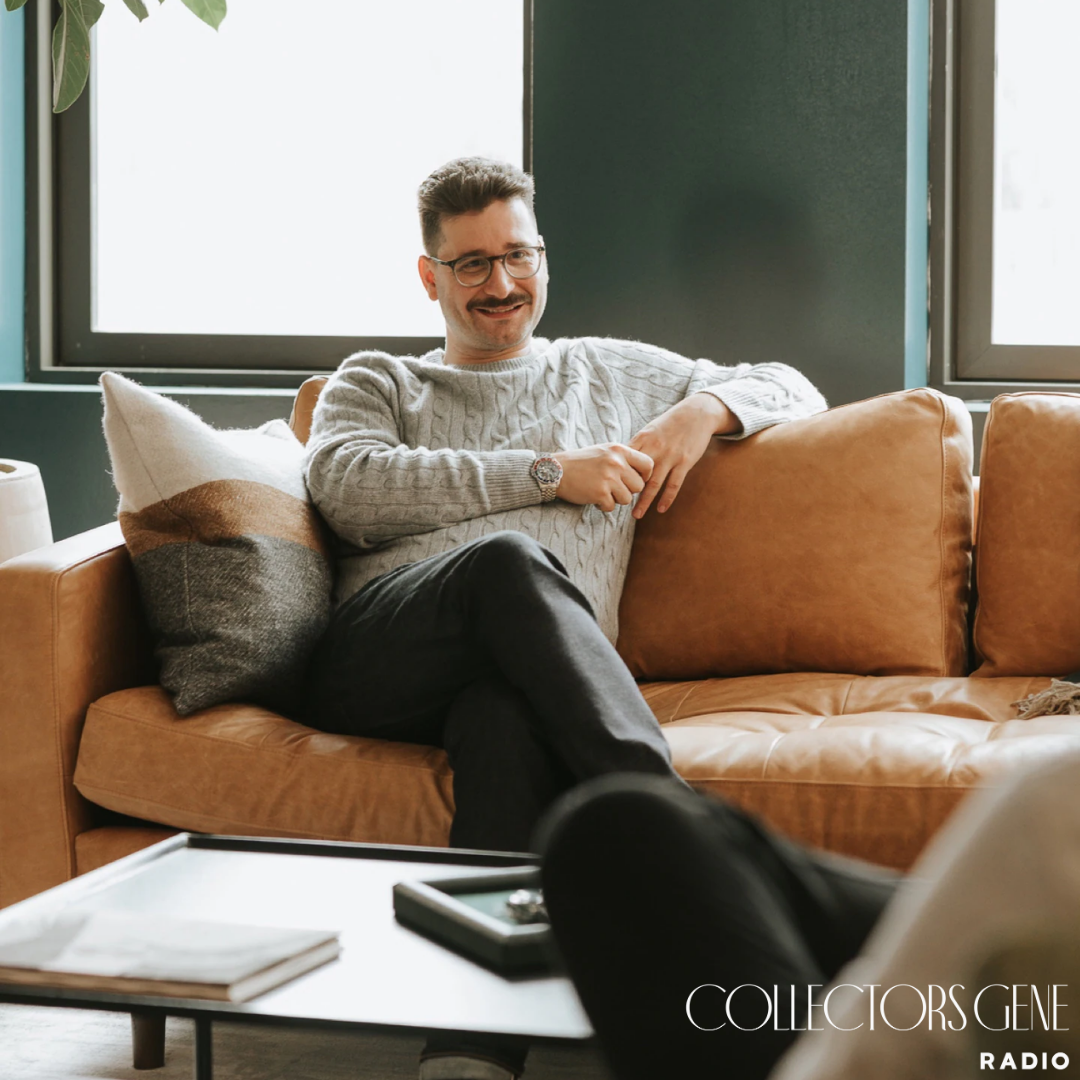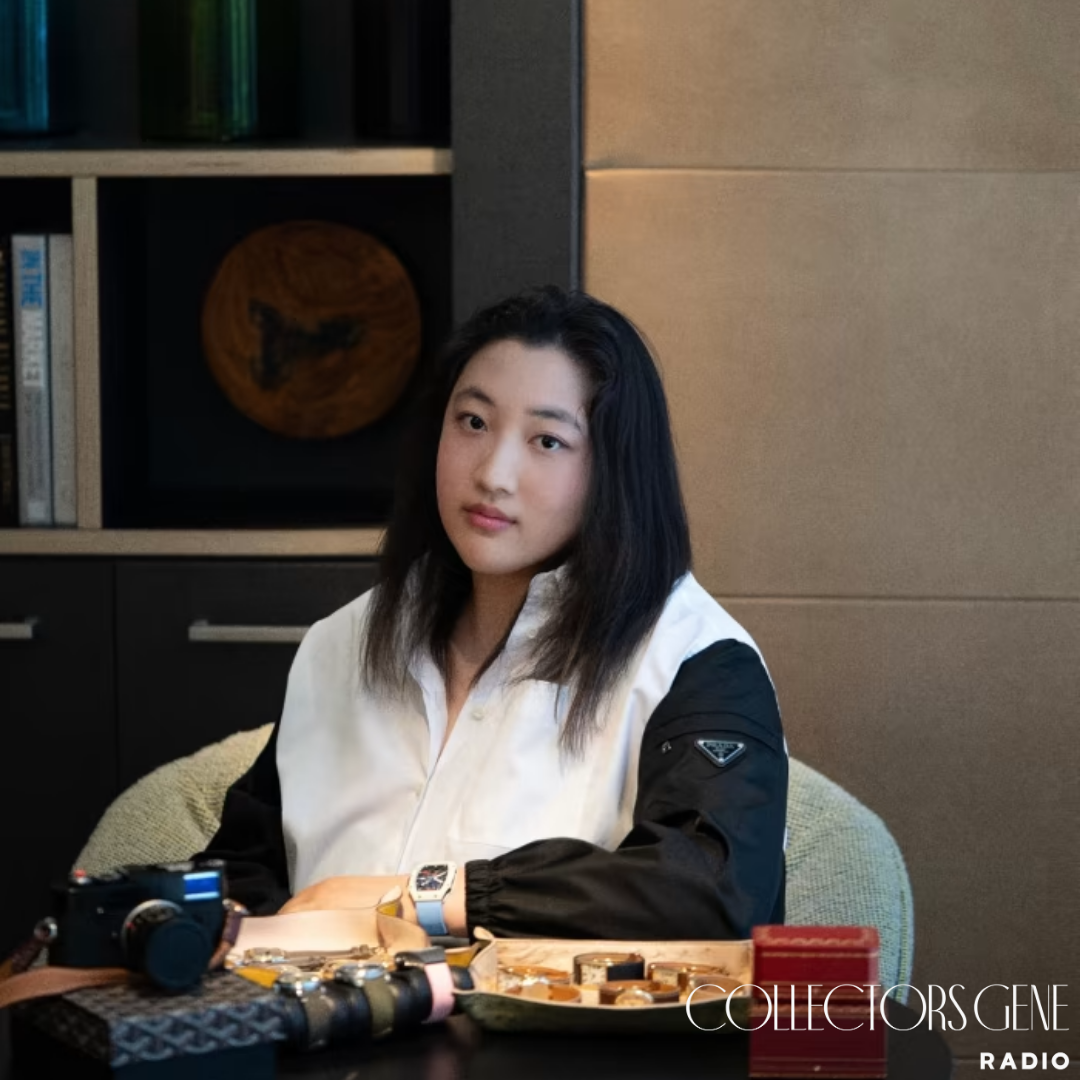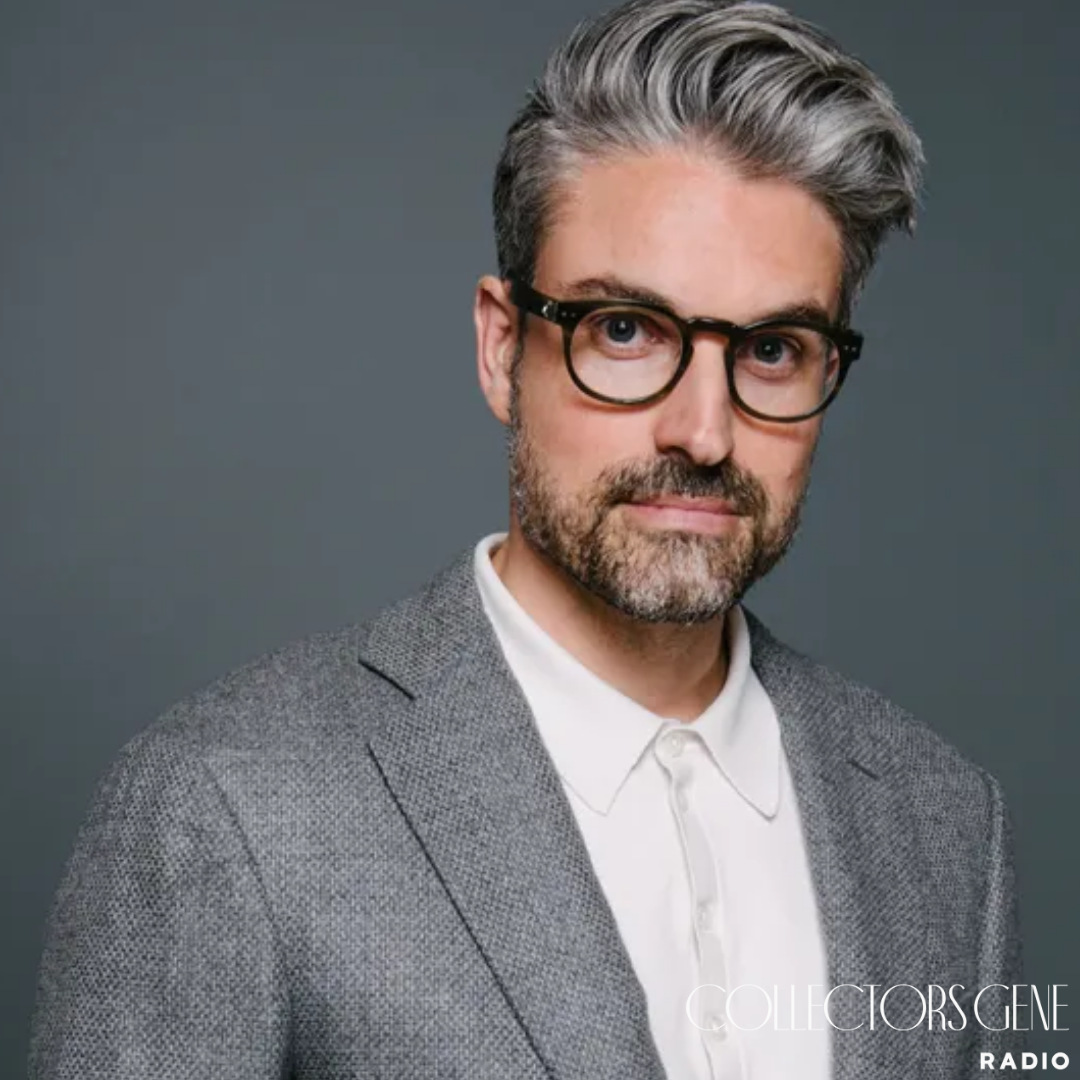There are few names in watch collecting that inspire as much respect as Auro Montanari, though most of us know him by his pen name, John Goldberger. He’s the rare kind of collector whose reputation cuts across generations. Young enthusiasts cite him as an inspiration, while seasoned veterans view him as a peer. He is not only a collector but also an author, a photographer, and a chronicler of horology whose books and images have shaped how the community thinks about design, provenance, and history.
For me, having him on Collectors Gene Radio was a milestone. Goldberger has spent decades proving that collecting can be both deeply personal and a public service. Not by hoarding knowledge but by documenting and sharing it. Our conversation touched on his first encounters with watches, his lifelong love of Cartier, his writing and photography, and the way his approach has remained consistent even as trends around him shifted.
Early Lessons in Collecting
Goldberger’s first exposure to collecting came at home. His parents filled their house with 17th- and 18th-century art, furniture, and ceramics, so he grew up surrounded by objects with history. But it was his father who gave him the piece of advice that changed everything. In the late 1970s, at the height of the quartz crisis, he told a young Auro to focus on mechanical watches. While the rest of the world was dismissing them as obsolete, he was out scouring flea markets and antique shops for treasures that no one else seemed to want.
That contrarian instinct became a lifelong compass. He already had experience collecting gold coins as a boy, so he knew the thrill of holding history in your hands. But watches captivated him in a new way. They were small, portable, wearable, and yet carried the same richness as a canvas or sculpture. His first significant purchase, a gold Rolex chronograph ref. 3835 with Art Deco lines, cost him $500 and it’s still in his collection today.
A Philosophy Shaped by Aesthetics and Provenance
What’s striking about Goldberger is how steady his philosophy has remained. He focuses on three things above all: aesthetics, condition, and provenance. He doesn’t chase hype or respond to market noise. For him, a watch must look beautiful on the wrist, survive intact with its integrity, and ideally carry a story that ties it to history.
That’s why his collection cuts across brands. He’s known for Patek and Rolex, yes, but also for Longines, Omega, and most especially Cartier. His relationship with Cartier began at a New York flea market in the late ’70s. The Tank Normale he picked up then is still with him. What hooked him was Cartier’s ability to keep its dial language consistent while experimenting with case shapes that ranged from elegant to eccentric. A Cartier from 1920 still looks fresh today, which tells you something about timeless design.
Cartier London and the Swinging Sixties
One of his current projects underscores this love of Cartier. He’s working with Francesca Cartier Brickell on a book dedicated to Cartier London, an era defined by the creative energy of the 1960s and 1970s. This was when London was the cultural capital of the world, and Cartier’s designs reflected that moment.
Unlike Paris or New York, Cartier London leaned into experimentation. Cases became bolder, materials more daring. Goldberger has been traveling across the U.S. to photograph these pieces in private collections, ensuring that their history is preserved. For him, Cartier London embodies the perfect intersection of cultural context and design bravery.
Beyond Watches: Photography and Books
Goldberger isn’t just collecting watches; he’s documenting them. His books on Rolex, Longines, Omega, and Patek are essential reading for anyone who wants to move past surface-level knowledge. They’re not price guides. They’re visual records, often showing watches few of us will ever handle.
Photography has always been central to his approach. His first book, Kodachrome, was about street photography. That same eye later turned to watches. He prefers unusual models over the mainstream. Open his Instagram feed and you’ll find Cartier oddities, rare Omegas, and one-off designs that stretch our sense of what watch design can be. In doing so, he has nudged the community to look beyond the usual suspects.
Ralph Lauren and the Slim Classique
Our conversation veered into Ralph Lauren, a shared enthusiasm. I wore my Slim Classique to honor the moment, and he told me about his platinum version, designed by Giampiero Bodino and inspired by a pocket watch from Ralph’s personal collection. Its guilloché finishing on bezel and dial rivals anything out there, and it carries a Cartier-like elegance.
It’s a reminder that when someone with strong taste and the right partners enters watchmaking, the results can be meaningful. He also appreciates the Automotive collection, though he admits the wood bezels are fragile. But as with everything, his eye goes straight to design and proportion.
The Modern Collector’s World
What I loved most about talking to Goldberger is how comfortable he is with the way collecting has evolved. He told me about sitting next to Tyler, The Creator at an auction in Monaco. Tyler was wearing a Cartier Crash, and they struck up a conversation. Only later did Goldberger realize who he was.
That story says a lot about how broad the collector community has become. A music artist in Los Angeles and a Milanese historian of watches might not seem to have much overlap, but taste has a way of connecting people. It also underlines how Cartier, once overlooked, now sits at the center of culture.
The Collectors Gene Rundown
The One That Got Away: A unique platinum tonneau-shaped wristwatch from the 1930s by James Schulz of New York, complete with minute repeater, chronograph, and perpetual calendar. It sold at Christie’s in 2006 for around $1 million, out of reach then, and unforgettable now.
The On Deck Circle: He’s focused less on acquisition and more on refining what he already has. Reducing the noise, keeping the exceptional.
The Unobtainable: A Patek Philippe reference 2512 split-seconds chronograph with a black dial. Permanently in the Patek Museum, never to leave.
The Page One Re-Write: If he had to choose just one, it would be a Patek Philippe 1518 perpetual calendar chronograph. In his words, it’s all you really need.
The GOAT: He recalls a Milanese woman who, in the 1990s, assembled an extraordinary collection spanning Patek, Rolex, Cartier, and Breguet. Her collection dispersed after her passing, but her taste remains a model.
The Hunt or The Ownership: For him, the thrill has always been in the hunt and the act of documenting. Daily wear is secondary to discovery.
Do You Feel That You Were Born With The Collector’s Gene?: Yes. He credits his parents with giving him both the impulse and the eye.
Closing Thoughts
What struck me most is how steady his philosophy has been over decades. He doesn’t chase what’s hot. He values design, history, and condition. And he shares what he finds through books, through photography, through conversations like ours.
Goldberger shows us that a collection doesn’t have to be about showing off. It can be a lifelong education, a record that benefits the next collector as much as it rewards the current one. That’s why he’s the figure so many of us look up to, and why his influence will outlast any market cycle.





